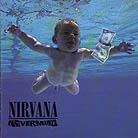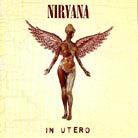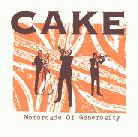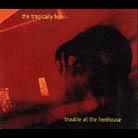| May 1999 On That Note… The ostensible reason for this hobby is music, no? So how much of your time is spent talking about the equipment and how much about the music that moves you? The equipment-review requirements -- intro, describe company and product, explanation of product features, sonic description, comparisons, conclusion -- straitjackets the music lover in me and in my fellow ‘Stagers, but the reason we do this is that each of us is passionate about music. One of the coolest reasons to work with these guys is that as a group we have diverse and deep musical tastes, which means that when I have a hankerin’ for quality speed metal, baroque chamber works or country blues, all I do is ask other SoundStagers and the recommendations come pouring in. In the spirit of sharing our love of music, and perhaps helping you discover new favorites as well, we introduce a new feature called "On That Note…." At least once a quarter we’ll take a single musical genre and give you a succinct description of its history, the significant artists, and why you should care. Just as with equipment reviews, there is no way words alone can guide you, so our music-savvy contributors will list their favorite albums and tell you why you should listen to them. Not every writer will have something to say simply because we all have music we like, and music that we politely call semi-organized noise (count me out when we get to essential contemporary country, which is my personal definition of oxymoron). Before we get started, some credits. "On That Note …" had its genesis in a long-ago e-mail by Doug Blackburn. The idea percolated for quite a while, first with Marc Mickelson and myself, and then with Ian White as well. To set it into action, I took it over. In spite of the stellar contributions of Doug, Marc and Ian, all errors contained in these articles are, first of all, innocent and, second, my responsibility. All I ask is that you temper any factual wrong-doings with the obvious passion for music we all share. And, On That Note, here’s the first installment. Rock: Alternative Like rock and roll itself, alternative rock is defined more by an attitude than a single style. From its impetus in the mid 1980s, alternative/indie rock was a reaction against mainstream rock, against the increasing corporatization and commoditization of the entire music industry. What binds the jangled folk rock of R.E.M., the metal funk of Red Hot Chili Peppers and Primus, the power pop of Matthew Sweet and Barenaked Ladies, the grunge of Nirvana and Soundgarden, the hard/metal sounds of Rage Against the Machine and Jane’s Addiction, the rap experiments of Beastie Boys and Yo La Tengo, the sonic experiments of Sonic Youth, and the bipolar piano-rock voyages of Tori Amos together are origins on independent labels, unique and/or controversial musical and lyrical stances and popularity built by college radio play, touring and word of mouth. Still, despite the diverse musical styles sailing under the alt.-rock banner, R.E.M. is the standard-bearer of the alt/indie movement. Starting with mid-’80s albums such as Murmur, Reckoning and Document (all released on independent label IRS), R.E.M. seemingly played more for themselves than for commercial acceptance. Jangled and powerful, the band’s sound offset the stream-of-consciousness lyrics and slurred vocals of lead singer Michael Stipe. By establishing themselves on college radio and (intentionally or not) using that as a springboard to break through to wider awareness, R.E.M. created the blueprint for bands that followed.
Nirvana is important for yet another reason. Their overnight success legitimized not just grunge but the entire alternative/indie movement. By 1991 mainstream rock was beginning to settle into the oldies fixation that continues today, while the corporate-made stars of the ‘80s had already proven their short-lived value. Rap was the only growth sector of the music market, but it had yet to complete the crossover to its current state of black music sold to a white audience. With record companies desperate for product, "Smells Like Teen Spirit" gave every corporate-molded A&R exec the same idea at the same time, and thus began the legitimizing of alternative rock. This has not been an entirely bad thing. With dollars behind them, bands like Soundgarden, Rage Against the Machine, Barenaked Ladies and Red Hot Chili Peppers have all broken through and had a significant impact on the music we listen to. Of course, this has also led to a diluting of the original spirit of alt. rock, but as with rock itself, the core remains vibrant. The themes of experimentation, alienation, rebellion and rejection of general social mores are sturdy and will survive. Better still, the original, groundbreaking works, with their honesty and individuality, remain vital. As for building an alt./indie library, stylistic diversity makes for a difficult genre to capture in a short listing of albums. Perhaps more than with other musical genres, the best advice for building a collection is to find artists you like and follow them to the end. If you find an album you love on any of the following lists, listening to other albums recommended by the same writer may also lead you to your own musical gems. Good luck in navigating such diverse waters. ...Todd Warnke The Lists
The following is a very subjective list of albums that each contributor has deemed his favorite. You’ll see some of the albums listed above as well as some that could have been on the Essential 25 list. More than an academic grouping, this is a listing of albums that these writers love, of albums that they regularly play and enjoy. Hopefully besides charting some of the more overlooked corners of this vague genre, you’ll find albums in this list that will excite you as much as they have those who placed them here. Frank Alles: They Might Be Giants – Flood [Electra 9 60907-2] This 1990 release is thought by many to represent the band’s best work. TMBG is big on synthesizer and makes use of guitar, drums, trombone, trumpet and (of course) vocals. Stirring satirical and comedic lyrics are the hallmark of this talented songwriting duo. The only way you can fail to be amused by these guys is if you are dead -- or you’re just not paying attention. The musical arrangements are unusual and varied and the quality of the sound is clean, though a tad light in the bass. My copy sounds better with the polarity inverted.
There has to be something very appealing about a group named after pastry. I believe M of G was the band’s first release, and as is often the case, it is arguably their best. Musically the group follows traditional rock stylings; Vincent di Fiore’s trumpet work adds an unconventional but welcome twist. John McCrea, the chief songwriter and lead vocalist, leaves us plenty of food for thought with his poetic lyrics concerning romance, politics and human nature. The sound of the album is rife with high-frequency nuance, and it is a bit lean in the bass, yet harmonically very pleasing. It is recorded at a lower-than-normal level, so you’ll have to crank up the gain more than usual. Rusted Root – Remember [Mercury 314 534 050-2] Sequel to the highly lauded When I Woke, Remember continues in the same vein of tribal percussion and rhythms combined with powerful vocal stylings and chants. Musically and artistically, this collection is every bit as good as the group’s earlier release, which is a very high compliment indeed. Both Remember and When I Woke will provide the listener with not only a profound musical experience, but reference-quality sonics that will push the performance envelope of your gear and ear. Bruce Bassett: The Tragically Hip – Up To Here [MCA 775627T MCD 6310] Ya know, I gotta tell you something. These guys are beauty. A bunch of good Canadian boys from Kingston. Listen to this, listen to this, listen for a moment, would ya? Anyhow, you see all these European players coming in and they’re all la-dee-da with their fancy moves, like that Lene Nystrĝm character of Aqua. I’ll tell ya one thing, ya got Baker, ya got Downie, ya got Fay, Langlois and Sinclair, and those guys got a lot of guts and everything like that. Ya better believe it! Unbelievable, unbelievable -- they go out and give their all for a full 60 minutes. Way to go boys! Translation for all the non-Canadian readers: "intense, uncluttered, hard-edged rock steeped with a Hip groove."
The Tragically Hip has defined alternative rock on the Canadian music scene for the past decade. As such, they are more than worthy of holding down two spots on my alt.-fave list. By picking trouble I mean no disrespect to the three CDs released after Up To Here, as they are all very good. trouble, however, took all of those releases’ creativeness, energy, intensity and patented Hip groove and wrapped them in a more polished, cohesive and complete package. the cranberries – no need to argue [Island 314-524 050-2] There was a cool band from Limerick, Wait -- there is more to this limerick There’s no need to argue with me, Sloan – Navy Blues [murderrecords MURSD 036] "Jangled" is a word used in the intro to this category, and one that is rather apropos to the sound of Sloan. Navy Blues is a collection of spunky, Beatlesque pop-rock on which Sloan demonstrates uncanny pop sensibilities. Great music for driving in the car, bopping around the house or to simply giving your brain a respite from thinking. James Causey: Smashing Pumpkins – Gish [Caroline Records, CAROL 1705-2] Everyone’s familiar with the Smashing Pumpkins’ megalithic breakthrough album, Siamese Dream, and their later travels into the land of psychedelia, but my heart is owned by their first full album, Gish. In Gish, you find an early, rawer version of the Pumpkin’s signature sound, with the never-incoherent noise of Corgan’s and Iha’s guitars backed by the modulating, explosive rhythms of Jimmy Chamberlain’s drum work. Sometimes petulant, sometimes slow and moody, but always intriguing, Gish sounds fresh with every listen, and every track is a keeper. The typical Butch Vig alterna-mix is rather muddy, but it still can’t hide the sheer energy in this work. Check out opening track "I Am One" for a great buildup and delivery, "Siva" for the perfect exhibition of early Pumpkins’ rage, and "Tristessa" for a preview of the sound that would make them stars. Sisters of Mercy – Floodland [Elektra, 9 60762-2] The Sisters of Mercy hold the dubious honor of being the most overplayed gothic band, with every gathering, party, dance, or other goth event somehow involving one of the Sisters’ classic tunes. Often imitated but never matched, Floodland is the band’s seminal work. Andrew Eldrich whispers, chants, and howls out angst, pain, anger, and depression, while instrumentally the band (primarily a solo act by the time of Floodland) mixes guitars, synthesizers, drum machines, and heavily processed vocals to stride a line firmly between Depeche Mode and late Ministry. "This Corrosion" is an absolute defining classic of the goth sound (and of alternative music as a whole, in my humble opinion) while "Lucretia My Reflection" and "Dominion/Mother Russia" will serve, along with a nice glass of red wine (looks like blood, dontcha know?) will seduce any aspiring little gothette. Don’t miss the oft-overlooked "Flood II." Sugar – Copper Blue [Rykodisc, RCD 10239] Any list of alternative music without at least one Bob Mould work is pure heresy. Whether you’re a Hüsker Dü fan from way back, or you think alternative music started with Nirvana and Pearl Jam, you’ll find a real treat in Sugar’s Copper Blue. Exhibiting the traditional power-driven, hook-laden tracks you’d expect from Mould, Copper Blue has a little something for everyone. Powered by (surprise) the noise and fuzz of the Bob Mould Guitar Sound[TM] and Mould’s distinctive voice, you’ll be lulled in by the hooks, but you’ll keep coming back for the clever lyrics and surprising musicianship. "If I Can’t Change Your Mind" and "Fortune Teller" will satisfy anyone’s need for hooks, but don’t forget the rest of the album, with classics like "The Act We Act" and "Hoover Dam." Nine Inch Nails – Pretty Hate Machine [TVT Records, 2610-2] The consummate one-man act (the band was added later for touring convenience), Trent Reznor probably never saw himself as the immense crossover act of the early 1990s, driven by powerful videos like "Closer" from The Downward Spiral. Pretty Hate Machine hearkens back to his early, edgier sound, with less polish. Pretty Hate Machine is just that, a pounding, angry machine of synths, drums, and Reznor’s ironic, emotional voice. The Nine Inch Nails sound matured, but never improved on this early venture. The classic "Head Like a Hole" is an obvious choice from the album, with "Kinda I Want To" and "Terrible Lie" giving more exposure to the early groundbreaking Reznor sound. Concrete Blonde – Bloodletting [Capitol 13037] Concrete Blonde has gone through a number of different sounds, ranging from the raw punk edge of their first eponymous release through melancholy, straight-up rock, and even country. Their finest work, Bloodletting, exhibits Jeanette Napolitano’s aggressive, in-your-face voice with an excellent band and superb thematic treatment. Alternating from heartbroken to playful, melancholy to world-weary, Bloodletting is a real treat. Standout tracks include the over-played "Joey," the rollicking fun of "Bloodletting (The Vampire Song)," and the underrated "Caroline." Jeff Fritz: Counting Crows – August and Everything After [DGCD-24528] This 1993 album was a lyrical showcase for lead singer Adam Duritz. The storytelling style of this group coupled with the feeling with which they perform make this album addictive. Recorded in a house outside Los Angeles, August and Everything After has always sounded a little too raw for my tastes. The music more than makes up for it, however. Back in the mid ‘90s, the Crows performed with Collective Soul on Alcatraz in San Francisco. This is one show I could not make, and it still haunts me to this day. Collective Soul – Collective Soul [Atlantic 82745-2] The sophomore album from this talented group of musicians is top-notch from start to finish. Having heard this group live on many occasions, I can tell you that they capture most of their live energy on the album. Just a bit of trivia, "Smashing young men" is directed at Smashing Pumpkins after a bit of unwelcome career coaching. The singles "Gel" and "The World I Know" are particularly good. Creed – My Own Prison [Wind-up 60150-13049-2] This hard-driving debut from Creed shows some social and moral conscience that is refreshing these days. The hit "My Own Prison" has been an awakening of sorts for many young people. Consider this album the proverbial cold slap in the face that our generation needs. Sounds good loud. Red Hot Chili Peppers – Blood Sugar Sex Magic [Warner Brothers 9 26681-2] This 1991 release produced by Rick Rubin was the "funk rock" alternative to the grunge seen. "Give It Away" and "Suck My Kiss" highlight this high-energy album. With the addition of the ballad "Under The Bridge," Blood Sugar Sex Magic the most complete Chili Peppers’ effort. Many a college student learned the fine art of pogo dancing while listening to Chili Peppers or one of their imitations. Candlebox – Candlebox [Maverick/Sire/Warner Bros. 9 45313-2] This 1993 release was the best effort so far from Candlebox. With songs like "Cover Me" and "Far Behind," Kevin Martin’s vocals are showcased in all their emotion. Candlebox later came out with Lucy, which lacked the magic of this earlier work. GO BACK TO: |
 Nirvana’s breakthrough song
"Smells Like Teen Spirit" took that same path. Our own Ian White was a college
DJ at the time and has this to say: "When I was a DJ on WRGW 540 AM (college station
at GWU) back in the early ‘90s, I distinctly remember the day when the single
"Smells Like Teen Spirit" (on vinyl) arrived in the weekly box of new music to
be inserted into our rotation. I had heard of Nirvana before this, but I wasn't all that
impressed with their first album (I think they had sold about 30,000 of them at that
point). I remember cueing up the song and pushing the pot to a fairly decent level. After
the song finished, I was too excited to even remember the name of the station. Totally
dead air for about 15 seconds. I composed myself, announced to the 15 people who were
listening to my show at 11pm on a Thursday night (didn't these people go out and party?)
that they had just listened to a song called "SLTS" from a band called Nirvana,
and went to a commercial spot. I played the song three more times that night, stole the
promo copy (still have it) and had the station manager go out and get another copy."
This song propelled both Nirvana and the Seattle grunge scene into national view.
This was a very different sound than R.E.M.’s, but it was informed by the same spirit
of independence and basic rock/rebellious values.
Nirvana’s breakthrough song
"Smells Like Teen Spirit" took that same path. Our own Ian White was a college
DJ at the time and has this to say: "When I was a DJ on WRGW 540 AM (college station
at GWU) back in the early ‘90s, I distinctly remember the day when the single
"Smells Like Teen Spirit" (on vinyl) arrived in the weekly box of new music to
be inserted into our rotation. I had heard of Nirvana before this, but I wasn't all that
impressed with their first album (I think they had sold about 30,000 of them at that
point). I remember cueing up the song and pushing the pot to a fairly decent level. After
the song finished, I was too excited to even remember the name of the station. Totally
dead air for about 15 seconds. I composed myself, announced to the 15 people who were
listening to my show at 11pm on a Thursday night (didn't these people go out and party?)
that they had just listened to a song called "SLTS" from a band called Nirvana,
and went to a commercial spot. I played the song three more times that night, stole the
promo copy (still have it) and had the station manager go out and get another copy."
This song propelled both Nirvana and the Seattle grunge scene into national view.
This was a very different sound than R.E.M.’s, but it was informed by the same spirit
of independence and basic rock/rebellious values. .E.M. – Murmur
.E.M. – Murmur Cake – Motorcade of
Generosity [Capricorn CXK-42035]
Cake – Motorcade of
Generosity [Capricorn CXK-42035] The Tragically Hip – trouble
at the henhouse [MCA mcssd 81011]
The Tragically Hip – trouble
at the henhouse [MCA mcssd 81011]